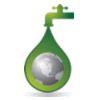
The disposal of chemicals via a sink drain and/or normal trash is highly regulated and subject to public concern and scrutiny. Federal, state and city government agencies have established rules and regulations which strictly limit chemical disposal to the sewer and trash. These rules and regulations have been established to protect human health and the environment from an exposure to hazardous substances, as well as to prevent damage to the city’s water treatment facilities.
In addition, all of the college’s refuse waste is collected, handled and processed by numerous persons prior to its ultimate disposal. During this period, the potential for containers to break and expose people to an “unknown” chemical could be significant. Furthermore, with the increased public alarm and concern about chemical and biological agents being released to the public, it has been determined that it is in the college’s best interests to not allow the disposal of containers of chemicals via normal trash.
Manuals and Guides
The drain and trash disposal procedure has been developed to help determine what is appropriate for drain and trash disposal. A summary of the procedure is provided below. The full procedure is available on the EHS website.
Trash Disposal Summary
For the approval of trash disposal, substances must exhibit the following characteristics:
- must not contain radioactive isotopes or chemicals
- must not contain biological hazards (treated or untreated)
- must not contain sharps or materials that can potentially cut or abrade skin,
- all chemical constituents must be listed on the non-hazardous chemical list (available in EHS Update -
 Drain and Trash Disposal of Chemicals)
Drain and Trash Disposal of Chemicals) - no full or partially full containers
- no excess or free-flowing powders
- standard lab articles only (e.g., gloves, pads, etc.)
Please note that glass should be containerized (preferably in thick cardboard) to prevent glass from breaking and injuring facility personnel during handling and transport to dumpsters.
Drain Disposal Summary
For the approval of drain disposal, your chemical and/or chemical solution must exhibit the following characteristics:
- must not contain radioactive isotopes or chemicals
- must not contain untreated biological hazards (must be treated prior to drain disposal)
- must be liquid not exceeding 5 gallons
- contains less than 10% solids,
- contains less than 50 mg/L (ppm) of oils and greases,
- all chemical constituents must be listed on the non-hazardous chemical list (available in EHS Update -
 Drain and Trash Disposal of Chemicals)
Drain and Trash Disposal of Chemicals) - must have a pH greater than 5.0 and less than 11.0.
For additional information concerning what chemicals and substances are approved for drain disposal, review the Drain & Trash Disposal Procedures
Empty Containers (Non-Acutely Toxic Chemicals Only)
Empty containers with the following characteristics can be disposed in normal trash:
- contain less than 3% by weight of the total container capacity
- must not contain radioactive isotopes or chemicals
- must not contain biological hazards (treated or untreated)
- original container must not have contained an acutely toxic chemical.
If all thresholds are met, your empty container can be disposed in the normal trash.
Please note that glass should be containerized (preferably in thick cardboard) to prevent glass from breaking and injuring facility personnel during handling and transport to dumpsters.

